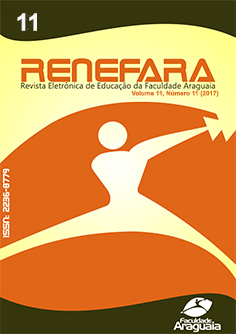ANALYSIS OF THE PHYSICO-CHEMICAL CHARACTERISTICS OF JARDIM BOTÂNICO LAKE WATER IN THE CITY OF GOIÂNIA-GO
Keywords:
Surface water, Conservation unit. Physicochemical parameters.Abstract
The research work presents an analysis of the physical and chemical parameters of the water of the Amália Hermano Teixeira Botanic Garden (JBAHT), located in Goiânia-Goiás, being totally inserted in the urban environment, being subject to the anthropic actions. The present study had as objective to present to the analyzes of physical-chemical parameters of the lake water of the JBAHT. Physical-chemical parameters analyzed: water temperature; Turbidity; conductivity; Dissolved oxygen; BOD; COD; PH; Nitrogen and total phosphorus, which were carried out in the laboratory. The sub-superficial collection of water samples was carried out at three different points of the Jardim Botânico lake, covering two similar stages, but at different periods of the year. With the information collected, the analyzes were compared in the rainy and dry periods, and if they obey the rules of the current legislation Art. 3 of CONAMA Resolution nº. 357/2005 regarding the category that this body of surface water is framed. It observed non-compliance with the environmental standard in the parameter total phosphorus, which presents 0.09 mgP/L. This difference can be explained by the location in the park, being subject to natural processes such as the land transportation mainly during the rainy season. During the dry season, total phosphorus levels were higher than those allowed for lentic environments at the three collection points; 0.10 mgP/L; 0.09 mgP/L and 0.07 mgP/L. The presence of phosphorus levels above that allowed throughout the lake can be explained by the presence of anthropogenic actions in the urban environment in which it is found, adding a large amount of this nutrient through pollutants, in addition to the low rainfall index allowing a greater dilution of this body of water.
Downloads
Published
Issue
Section
License
The copyright of the published articles will be transferred to the Uniaaraguaia Magazine, allowing its subsequent reproduction as transcription and with due citation of source. In the event of acceptance and before the publication of the article, the plaintiff (s) shall write a statement formally transferring copyright to the magazine.
The author may also print and distribute copies of his article, provided that he mentions that the rights belong to the Uniaaraguaia Magazine.
Author rights include the right to reproduce in full or partly by any means, distribute this article, including figures and photographs.
By submitting originals to the Uniaaraguaia magazine, the author or authors express agreement with the following terms:
a) Authors maintain copyright and grant Uniaraguaia magazine the right of first publication, with the work simultaneously licensed under the Creative Commons Attribution license that allows the sharing of work with recognition of the authorship and initial publication in this magazine.
b) Authors are authorized to assume additional contracts separately, for non-expiration distribution of the work version published in this magazine (eg publish in institutional repository or as book chapter), with recognition of authorship and initial publication in this journal.
c) Authors are allowed and are encouraged to publish and distribute their work online (eg in institutional repositories or on their personal page) to any point before or during the editorial process, as this can generate productive changes as well as increase the impact and citation of published work.

